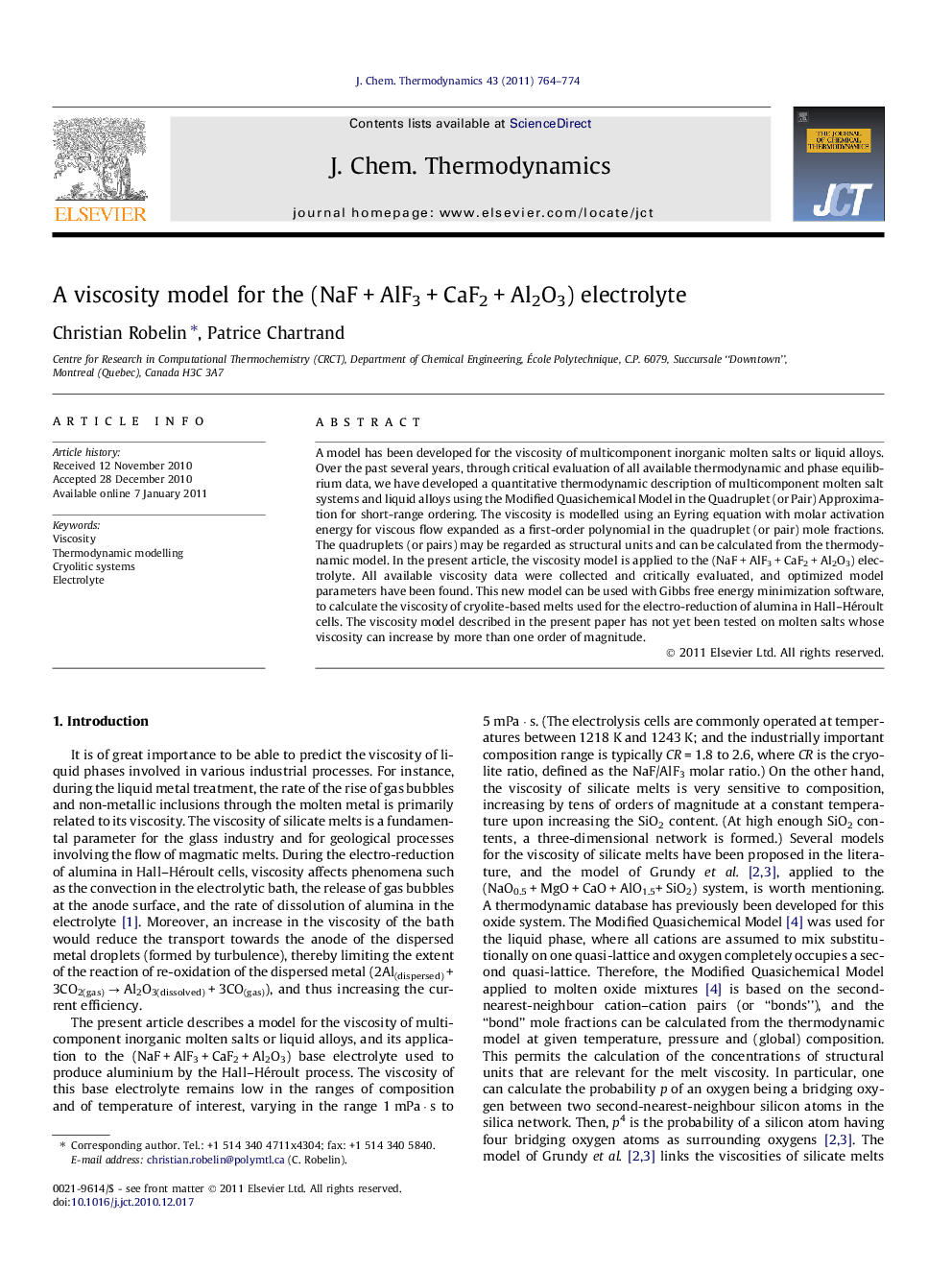| Article ID | Journal | Published Year | Pages | File Type |
|---|---|---|---|---|
| 216353 | The Journal of Chemical Thermodynamics | 2011 | 11 Pages |
A model has been developed for the viscosity of multicomponent inorganic molten salts or liquid alloys. Over the past several years, through critical evaluation of all available thermodynamic and phase equilibrium data, we have developed a quantitative thermodynamic description of multicomponent molten salt systems and liquid alloys using the Modified Quasichemical Model in the Quadruplet (or Pair) Approximation for short-range ordering. The viscosity is modelled using an Eyring equation with molar activation energy for viscous flow expanded as a first-order polynomial in the quadruplet (or pair) mole fractions. The quadruplets (or pairs) may be regarded as structural units and can be calculated from the thermodynamic model. In the present article, the viscosity model is applied to the (NaF + AlF3 + CaF2 + Al2O3) electrolyte. All available viscosity data were collected and critically evaluated, and optimized model parameters have been found. This new model can be used with Gibbs free energy minimization software, to calculate the viscosity of cryolite-based melts used for the electro-reduction of alumina in Hall–Héroult cells. The viscosity model described in the present paper has not yet been tested on molten salts whose viscosity can increase by more than one order of magnitude.
Research highlights► A model for the viscosity of multicomponent inorganic molten salts or liquid alloys. ► Description of the viscosity model for the NaF–AlF3–CaF2–Al2O3 base electrolyte. ► The model is linked to the previously developed thermodynamic and density models
